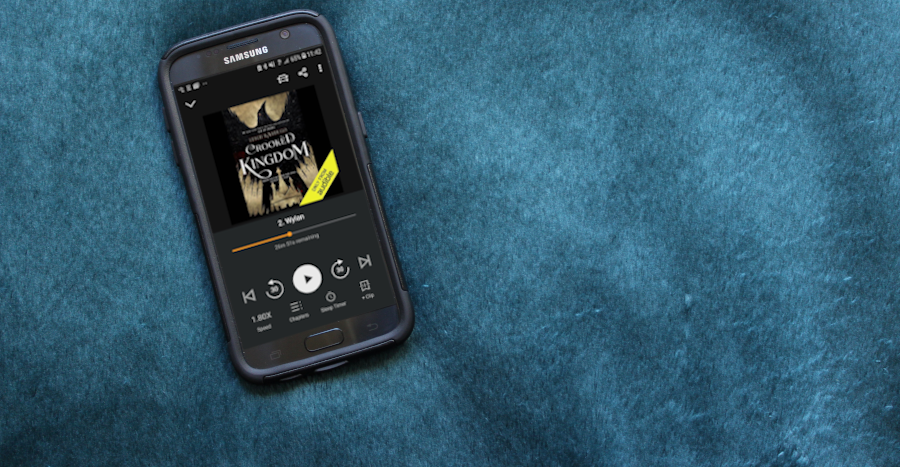It’s a common stereotype that readers are notorious for hating on e-books, audiobooks, and pretty much any form of reading that isn’t a hardcover from 1974 with a faded velvet bookmark. You’ve seen the poorly-formatted memes and comics – kids these days with their “Kindles” and “Nooks,” not reading scrolls by candlelight like we did in ye olde America. What happens when your e-reader’s battery is drained, or you can’t find your headphones?
Don’t get me wrong, “non-traditional” forms of reading aren’t perfect. The blue light from our smartphones and e-readers is considered harmful, though there continue to be ways to work around that effect. You could argue that people tend to retain written information better when it is on a page rather than a screen. And of course, the aesthetic – there is nothing quite like having a beautiful collection of books to surround yourself with.
At the beginning of the month, my campus library posted this poll on their bulletin board:

And recently in my papermaking/bookmaking class, we’ve been talking about how books and the methods we prefer to use when we read them. Despite what the memes suggest, people of my generation still love printed text.
Unfortunately, this love of traditional reading often comes with a disdain for other ways of consuming books. But let me confess something: I love having e-books and audiobooks. As time passes, they’ve become a more present part of my reading experience, and I’m incredibly thankful for it. These days, when I hear someone mocking non-traditional reading, it takes a lot out of me not to start an argument. So instead of starting an argument in person, I’ve decided to write a little bit about why e-books and audiobooks are in some ways better than printed pages.
For starters, e-books and audiobooks make reading more accessible in two ways. First, they allow handicapped readers to still enjoy the books they love. For example, most e-books and e-readers have a function that changes the font size of a text, allowing visually impaired readers to still enjoy the books they love. The same goes for audiobooks – listening to a book as opposed to reading it on a page can be a great alternative for someone who finds it challenging to consume books in the “traditional way.”

Second, e-books and audiobooks make books accessible to people who may not be able to obtain them otherwise. Not everyone lives close to a library or a bookstore, and even if they do, not everyone has transportation to get them there. Online retailers like Amazon may allow us to have books brought straight to our front door, but let’s face it – books are expensive. True, a new paperback may only cost $10-15 (USD), but if that’s the only way you can get books, the cost stacks up quickly. E-books and audiobooks tend to be a more widely-available option for getting new books, and they tend to be more cost-effective as well.
Audiobooks in particular also appeal to people with different learning styles. You might have heard this before, but people can be categorized into three types of learners: visual, auditory, kinesthetic (hands-on), and reading/writing. I don’t think it’s much of a stretch to say that most of our ways of gaining information or hearing stories appeal to people who are visual or reading learners. With audiobooks, an auditory learner may actually retain the information they read better than if they were to read a “traditional” book.
Non-traditional books also offer a unique reading experience. It’s not unheard of for audiobooks to feature multiple narrators for different points of view, or to incorporate music and other audio elements. The digital interface of e-books can allow for more interaction with the text. I know from experience that if I highlight a word of phrase in my Kindle e-book, I can see its definition right there.

Finally, e-books and audiobooks don’t actually hurt public libraries and bookstores as much as you might think – in fact, they might even help them. Most public libraries offer some type of service that allows its patrons to borrow e-books and audiobooks in the same manner as they would a physical book. These services, like Overdrive, Libby, and Hoopla serve to make reading even more accessible. I can only speak from personal experience, but there are a few libraries that I use exclusively for their online collections, since they’re further away from where I live.

And rest assured, libraries and bookstores aren’t going anywhere – in fact, most of them are very good at adapting to changes in technology by serving as community spaces, rather than just a place to access books.
When it all comes down it, there really isn’t one form of reading that’s better than the others. If you still prefer hardcovers to e-books, then that’s all right! What I think we often neglect though is that technology has made reading (and with it, information) more available to all, and I think that’s something we can be thankful for regardless of our reading preferences. If all we really care about is that people are reading, does it really matter how they do it?


Leave a Reply